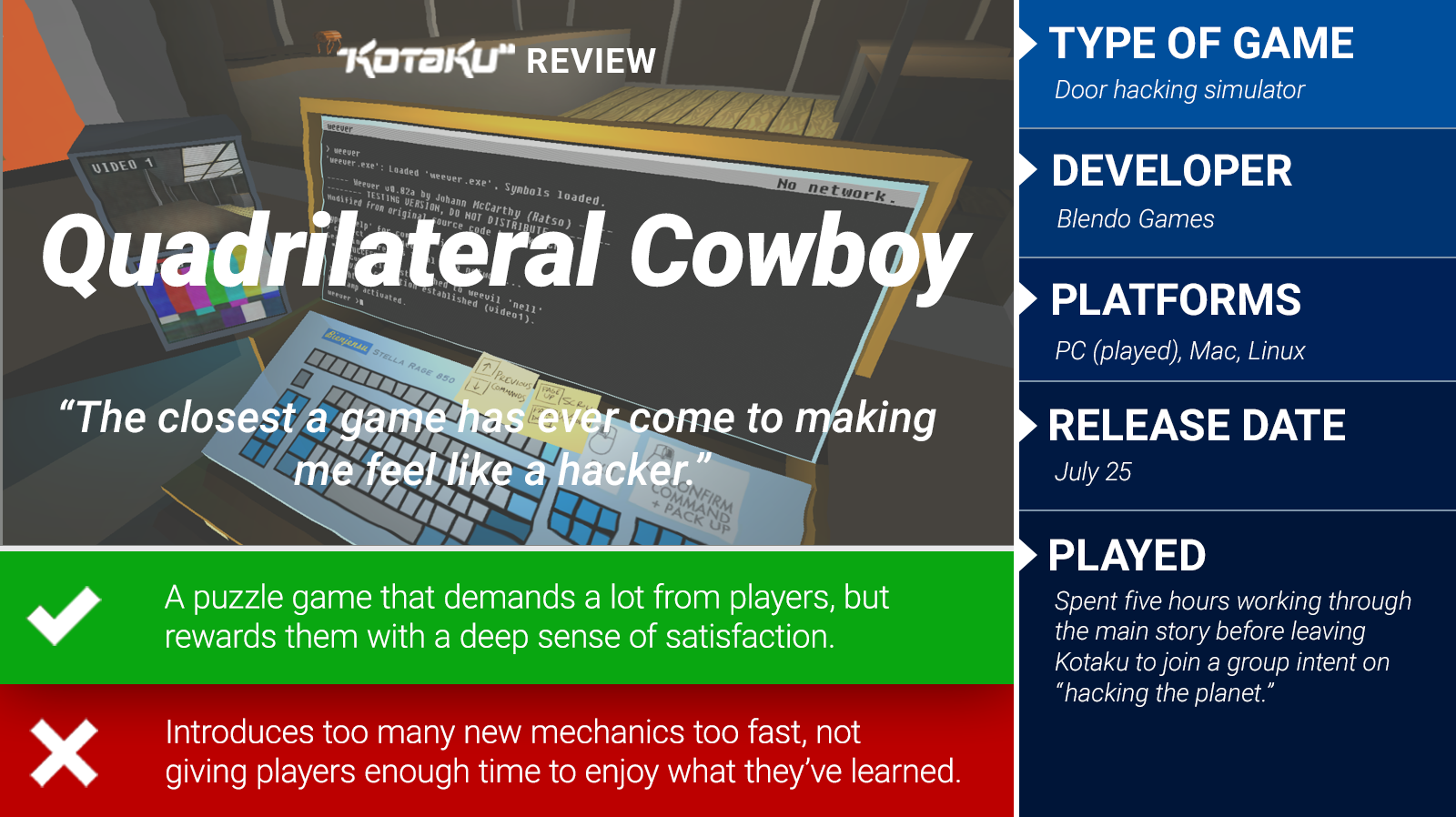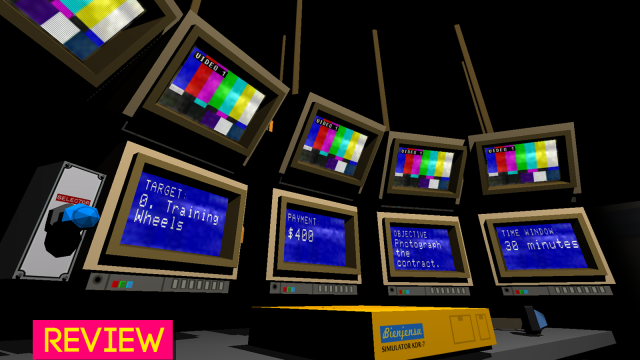Staring off into space. Drumming a desk with your fingers. Loading the Facebook app on your phone for the fifth time in 20 minutes. Then, it happens: the a-ha moment where experimentation has a baby with logic and a previously “impossible” puzzle is solved. There are many moments like this in Quadrilateral Cowboy, the closest a game has ever come to making me feel like a hacker.
Set in a bizarro version of the 1980s, Quadrilateral Cowboy has players joining a gang of thieves who loot using techno wizardry. Your main tool is a “hacking deck” that can manipulate the electronics around you, leveraging a basic, easy to learn programming language. As the game progresses, you get access to other tools, including programmable robots and guns that introduce new layers of trickery.
This all comes courtesy of Brendon Chung, one of the most interesting designers you’ve never heard of. He previously worked on Gravity Bone and 30 Flights of Loving, two fascinating slices of experimental storytelling. 30 Flights of Loving, for example, impressively integrates the jump cut concept from film, where the story sharply and immediately transitions from one scene to another.

In terms of sheer gameplay, Quadrilateral Cowboy represents Chung’s most ambitious work yet. That’s largely because Quadrilateral Cowboy may be the first game to make hacking a truly enjoyable mechanic.There’s a reason most people roll their eyes at hacking mini-games: most of them suck. Remember how BioShock had you, uh, flipping pipes? That’s hardly a slight against BioShock, as few games have accomplished much better.
An early puzzle finds you in a room with two doors. The doors do not open by being pushed; instead, you need to set your hacking deck on a nearby table to mess with the electronics. (The game literally makes you set the deck down and pick it up again. It’s a charming quirk that will probably infuriate some people.) The deck looks like an MS DOS prompt, a visual that will make the most sense to people who grew up with computers in the 80s and 90s. By typing telnet — a real-life protocol to access remote computers — you can mess with the doors to progress toward your goal. Typing “dir” pulls up a list of hackable objects. In this case, it’s door1 and door2.
I then typed “door1.open (3); wait (3); door2.open (3).”
“Door1.open” refers to the first door, with open/close being the trait you can modify. The number three refers to how many seconds the door will be opened, as different levels have different requirements before the security system is triggered. “Wait (3)” tells the deck to wait another three seconds before opening the second door, giving you time to run over to it. As you move forward in the game, typing cryptic sequences like the one below become second nature:
Weever; connect nell; move 40; move -10; datajack 2; exit; aimbot; deploy; connect; fire.
In my head, all of that makes sense. If it sounds overwhelming, take a deep breath.
Your “powers” in Quadrilateral Cowboy are ultimately quaint compared to most video games. Doors open, windows close, terminals slide away. Sure, you’ll sometimes fire a gun, but there are no enemies in Quadrilateral Cowboy, only security systems to occasionally trip up. Even then, the consequences are personal embarrassment, the punishment more time added to the clock. (The game keeps track of how long it takes you to finish a mission, and has a series of leaderboards.)
Though the game adds new and potentially interesting layers of complexity as the story moves forward, I found myself disappointed at how little the game took advantage of them. It moves at a rapid-fire pace, with almost every mission introducing a new gimmick to play around with. And yet, I found myself wishing there were more complex takes on the tasks I’d just spent 20 minutes learning. Instead, it was on to the next piece of tech, with past lessons mostly ignored.
If a community springs up around the game, though, fans could solve this problem. Quadrilateral Cowboy is fully moddable, and with any luck, there will be more of the kinds of levels I’m looking for soon.
When we talk about the relationship between games and power fantasies, we often invoke the fantastic. Though Quadrilateral Cowboy is quasi-futuristic, the skills it imbues the player with are, by comparison, banal. But in asking the player to perform meaningful mental labour to accomplish the task at hand, the banal becomes surprisingly gratifying. And even if it doesn’t quite live up to its potential, Quadrilateral Cowboy made me feel like a hacker for a while. That’s pretty damn cool.

Comments